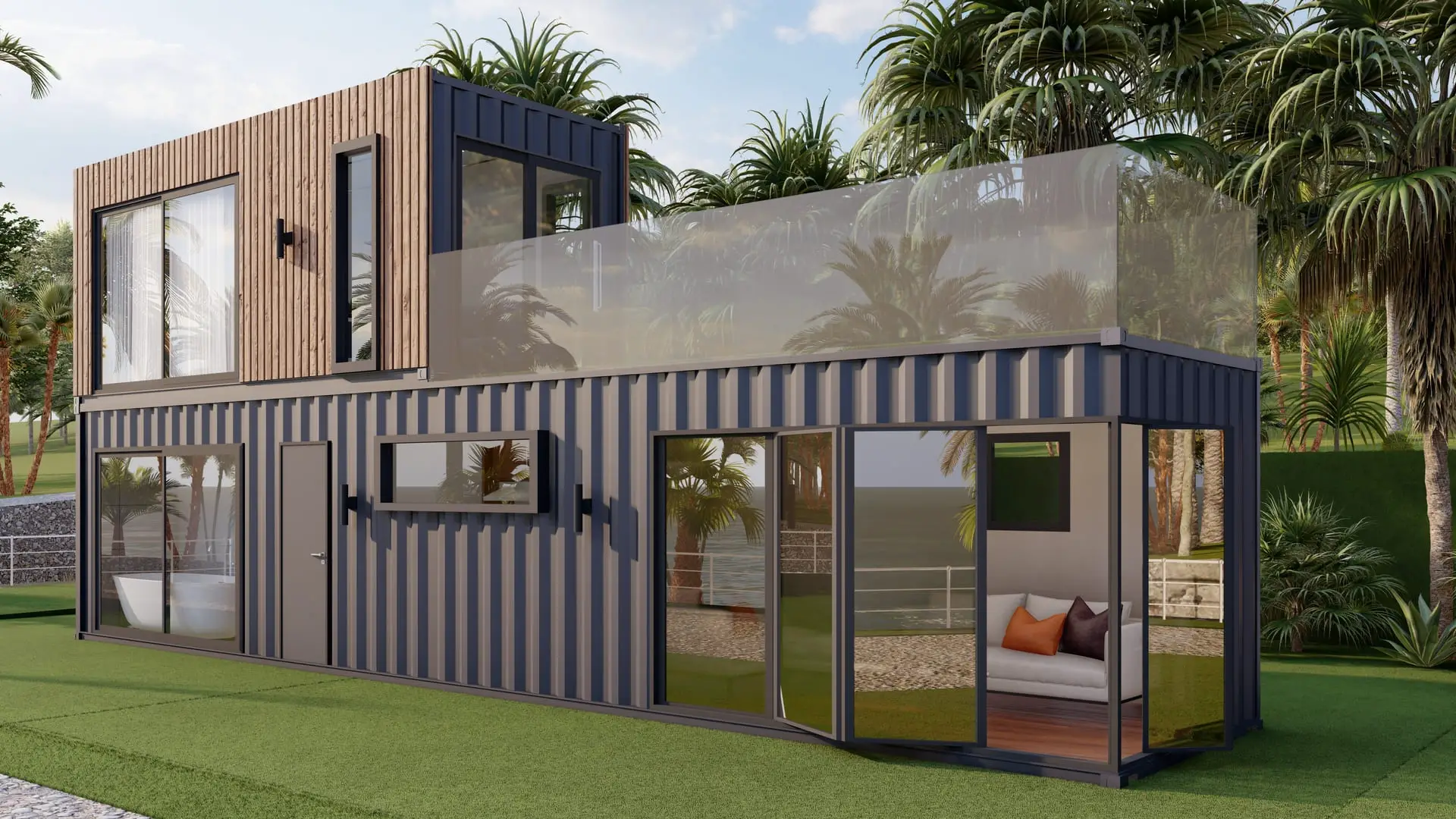Introduction:
As the world seeks greener alternatives in construction, shipping containers have emerged as a sustainable and eco-friendly building solution. In this exploration, we delve into the environmental benefits of container construction, shedding light on how these versatile steel boxes are shaping the future of architecture while contributing to a more sustainable planet.
- Resource Efficiency: Reducing the Carbon Footprint
- Discuss how container construction minimizes the demand for new materials, reducing the need for resource-intensive processes. Explore how repurposing shipping containers contributes to lower carbon emissions compared to traditional construction methods.
- Upcycling and Recycling: A Second Life for Steel
- Highlight the environmental impact of upcycling and recycling shipping containers. Explore how converting used containers into habitable spaces not only prevents them from becoming waste but also reduces the demand for new raw materials.
- Reduced Land Usage: Maximizing Space Responsibly
- Discuss how container construction allows for efficient land use, particularly in urban environments. Explore the potential for compact and stacked designs, reducing the need for extensive land development and preserving natural spaces.
- Energy Efficiency: From Cooling to Insulation
- Explore how container structures can be designed for enhanced energy efficiency. Discuss natural ventilation, insulation techniques, and the adaptability of containers for renewable energy installations, contributing to lower energy consumption over the building’s lifecycle.
- Quick Deployment and Modular Design: Minimizing Construction Impact
- Showcase the rapid deployment capabilities of container construction, reducing construction time and minimizing the disturbance to surrounding ecosystems. Discuss the benefits of modular design, allowing for easy scalability and adaptability.
- Water Conservation: Smart Solutions for Sustainable Living
- Explore how container homes can be designed with water conservation in mind. Discuss rainwater harvesting systems, greywater reuse, and other innovative solutions that contribute to sustainable water practices.
- Transportation Efficiency: Reducing Carbon Emissions in Delivery
- Discuss the environmental benefits of transporting prefabricated container modules, highlighting how this approach can reduce transportation-related carbon emissions compared to traditional construction materials.
- Adaptability and Repurposing: A Lifelong Commitment to Sustainability
- Explore how container structures can be easily adapted or repurposed for various uses, extending their lifespan. Discuss how this adaptability contributes to a circular economy and reduces the environmental impact of building replacements.
- Reduction of Construction Waste: Minimizing Debris and Disposal
- Highlight the minimal waste generated during container construction compared to traditional building methods. Discuss how this reduction in construction waste contributes to a more sustainable and environmentally friendly construction industry.
- Eco-Friendly Designs: Merging Aesthetics with Sustainability
- Showcase examples of aesthetically pleasing container designs that prioritize sustainability. Discuss how architects and designers are incorporating green roofs, solar panels, and other eco-friendly elements into container structures.
Conclusion:
Container construction is not merely a trend; it’s a sustainable revolution in architecture. By embracing the environmental benefits of repurposing shipping containers, we can build a future where construction is not just about erecting structures but also about preserving the planet we call home. Container construction offers a blueprint for a sustainable and eco-conscious approach to building, leading the way to a greener tomorrow.
 عربي
عربي عربي
عربي